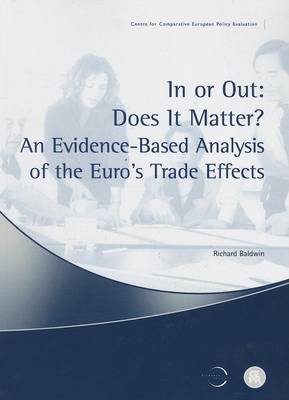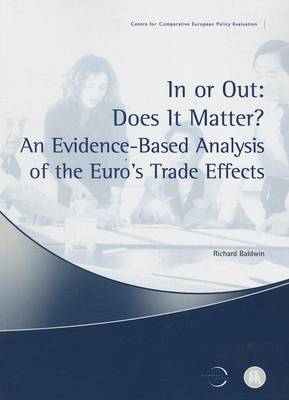
- Retrait gratuit dans votre magasin Club
- 7.000.000 titres dans notre catalogue
- Payer en toute sécurité
- Toujours un magasin près de chez vous
- Retrait gratuit dans votre magasin Club
- 7.000.0000 titres dans notre catalogue
- Payer en toute sécurité
- Toujours un magasin près de chez vous
In or Out: Does It Matter?
An Evidence-Based Analysis of the Euro's Trade Effects
Richard E BaldwinDescription
The euro can be seen as the world's largest economic policy experiment. Six years ago, European nations accounting for 20% of world output, 30% of world trade, and 300 million people found themselves using the same currency. Given the importance that monetary regimes have on the course of human events, this should have had effects all across the board--affecting everything from unions' wage bargaining to educational exchanges and corporate investment strategies. This report reviews the existing empirical literature on the trade effects of currency unions, in non-European and European cases. It goes on to speculate on the types of economic mechanisms that might be driving these trade effects and proposes diagnostic tests that could help reject some or all of the theoretical explanations. Finally, conclusions on the size of the trade effect of the euro are drawn.
Spécifications
Parties prenantes
- Auteur(s) :
- Editeur:
Contenu
- Nombre de pages :
- 110
- Langue:
- Anglais
Caractéristiques
- EAN:
- 9781898128915
- Date de parution :
- 26-07-06
- Format:
- Livre broché
- Format numérique:
- Trade paperback (VS)
- Dimensions :
- 171 mm x 248 mm
- Poids :
- 268 g

Les avis
Nous publions uniquement les avis qui respectent les conditions requises. Consultez nos conditions pour les avis.






